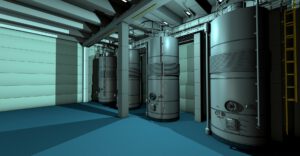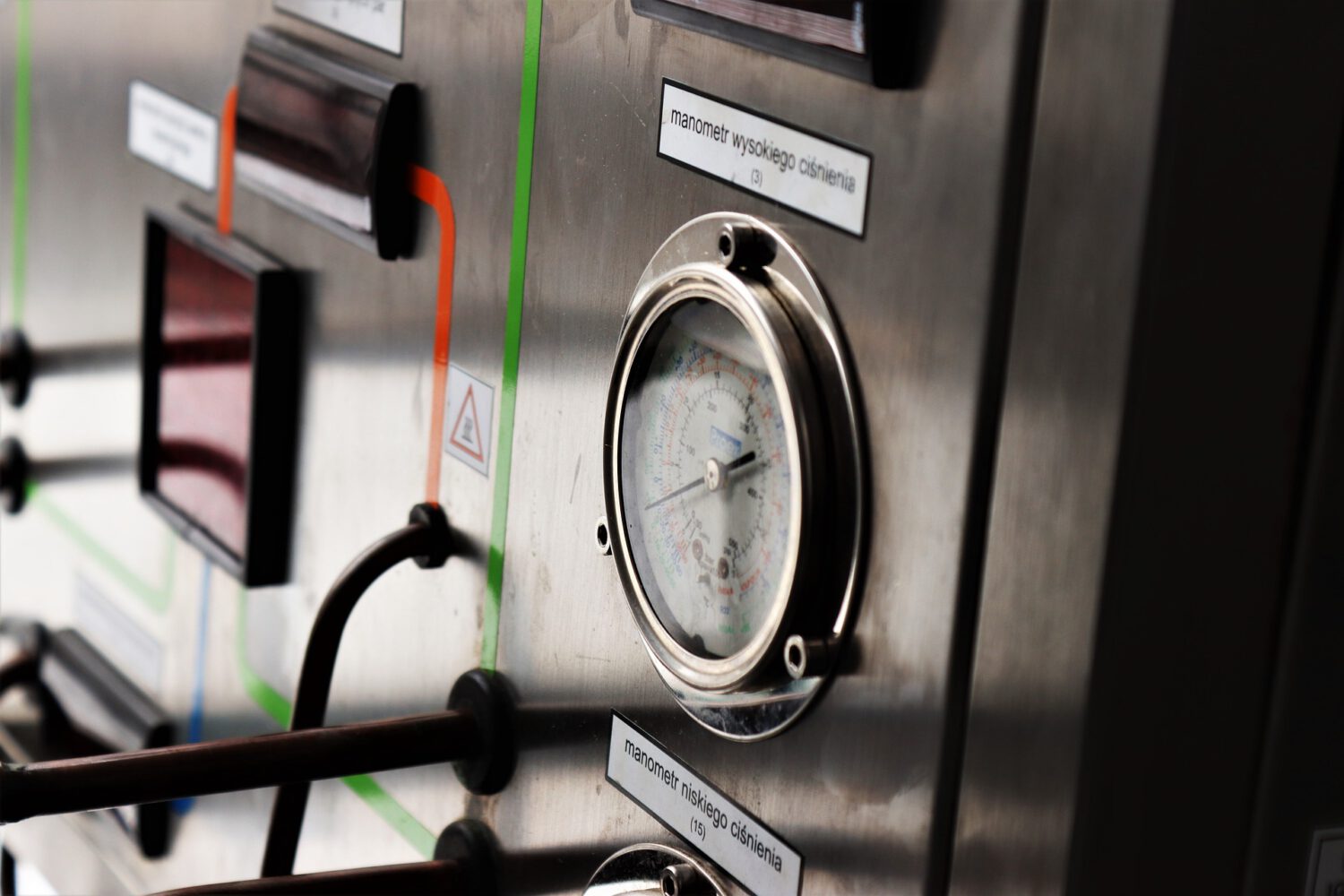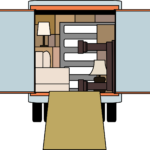When designing a house, you should consider many aspects. Often the factor that most influences your decision making is price. The convenience and comfort of living in a new place are also important. One thing to think about is how to heat your home. The solution may be to use a heat pump .
Heat pumps – principle of operation
 Heat pumps are heating devices that use thermal energy from natural earth, air and water layers. Their operation is based on the following phenomena: evaporation, compression, condensation and expansion. In the evaporator, which is a heat exchanger, the working medium – a mixture of liquid and gas – is evaporated. In this way, heat energy is collected from the ground source. The next stage is sucking the medium – low pressure steam into the compressor.
Heat pumps are heating devices that use thermal energy from natural earth, air and water layers. Their operation is based on the following phenomena: evaporation, compression, condensation and expansion. In the evaporator, which is a heat exchanger, the working medium – a mixture of liquid and gas – is evaporated. In this way, heat energy is collected from the ground source. The next stage is sucking the medium – low pressure steam into the compressor.
There, its pressure and temperature increase. Then, the gaseous medium goes to another element of the cycle – a heat exchanger called a condenser. The medium with high pressure and temperature gives off heat energy to the upper source. This causes it to condense. The final element of the thermodynamic cycle is the expanded valve. In it, the amount of refrigerant going to the evaporator is rationed. During this process, the pressure and temperature of the medium decrease. In this way, the medium circulates in the thermodynamic cycle, which ensures cyclical operation of the heat pump.
- https://www.parta.com.pl/jak-pozyskac-srodki-unijne-na-wlasna-dzialalnosc/
- https://www.mojagarbatka.pl/filtry-przemyslowe/
- https://www.banae.pl/zlomowanie-samochodu-jak-sie-pozbyc-samochodu-krok-po-kroku/
Top and bottom heat source
Heat pumps form a closed system in which continuous transformations from liquid to gas and vice versa take place. There are two main parts that are required for the operation of a heat pump, called the upper and lower source. The lower source is most often the ground in which flat, spiral or probes are placed, water, air. The upper source is a heating installation, most often a floor heating or a fan coil.
Collectors used in the ground source of heat pumps can be vertical and horizontal. Horizontal collectors are placed at a depth of about 1.2 to 15 meters below the ground. Installation of this type of collector takes several days and you need a large plot of land. Vertical collectors require wells of up to 130 meters and must be performed by a specialized company. Installation works take 2-3 days. The cost of this type of collectors is slightly higher than the horizontal ones, but they do not require such a large plot and ruin it less. Due to the stable temperature at greater depths of the earth, it is a more reliable source of heat.
Types of heat pumps
Heat pumps can be divided according to the type of heat source. We distinguish between air pumps, water pumps and ground pumps.
Air pumps are becoming more and more popular due to the fact that they do not require high start-up costs. The name of this group of heat pumps indicates that the heat source is air taken from the outside. Air pumps can be further divided into types:
– air – air (heat transport to the inside)
– air – water (heat supplied to the heating circuit and the hot water tank).
This type of heat pump should be combined with low temperature systems such as underfloor heating. When using this pump, it is necessary to equip the property with another, additional source of heating, as this type requires support or replacement in the event of large temperature differences inside and outside the premises.
Water pumps have high energy efficiency. In this case, the heat source is flowing water. This type of heat pump may be the only heating source used in the property. The downside of this type of equipment is high investment costs. Oil, gas or electricity can be used externally to power the pump.
The last group are ground source heat pumps. They are the most popular devices and most often installed in new properties. They are used to supply heat to the heating circuit and domestic hot water tank. The heat source in these devices is the ground. The advantages of using this type of heat pump include high operating efficiency, thanks to which it can be the only source of home heating. The downside is that when using a horizontal exchanger, the plot must have a large area, and in the case of vertical probes, deep drillings must be made – up to 130 meters.
Heat pump and ecological aspects
Nowadays, great importance is attached to ecology and reduction of environmental pollution. Global warming is becoming a reality and everyone can observe it in their surroundings. One solution may be a way to insulate your home that does not significantly affect air quality. During their operation, heat pumps do not emit pollutants into the atmosphere. These devices are considered environmentally friendly due to the fact that they use renewable energy sources to power them. In addition, the currently used cooling agents, which are contained in exchangers, are also classified as ecological.





